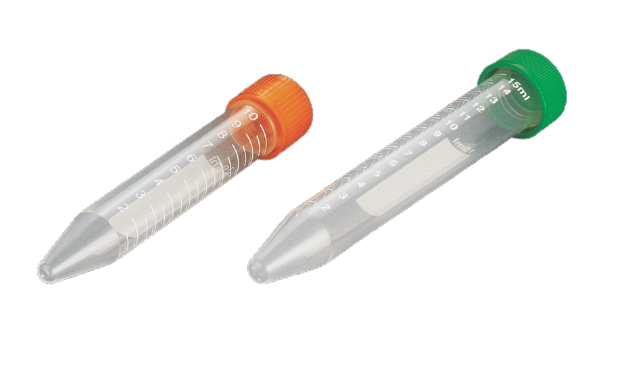
Centrifuge Tube
A centrifuge is a device that works by spinning a container at a high speed, causing the heavier particles to settle towards the bottom of the tube and lighter ones to rise up. Centrifuges can be used for biphasic separation where different layers form in the centrifuge tube. The ratio between these layers is dependent on the properties of the solvents, solutions or suspensions that are being separated. Find out what else they can do in this article!
| Ref. No.: | Description: | Volume: | Qty Cs. : |
|---|---|---|---|
| NML323 | Centrifuge tube (Screw cap) | 10ml | 1800 |
| NML324 | Centrifuge tube (Screw cap) | 15ml | 1800 |
A centrifuge tube is a small, cylindrical container that is used to hold samples during centrifugation. Centrifugation is a process in which a sample is spun at high speeds in order to separate out its different components. Centrifuge tubes come in a variety of sizes and can be made from different materials, such as glass or plastic. They typically have screw-on caps that allow for easy opening and closing. Centrifuge tubes are an essential piece of equipment for many laboratories, as they provide a quick and easy way to isolate different components of a sample.
A centrifuge tube is a small, cylindrical tube that is used in laboratory settings to separate different substances. The centrifuge tube is placed in a centrifuge, which is a machine that spins the tube very quickly. This spinning causes the heavier substances to settle to the bottom of the tube while the lighter substances stay at the top. Centrifuge tubes are used in many different settings, including medical laboratories, research laboratories, and industrial laboratories. They can be used to separate blood cells from plasma, to purify proteins, or to extract DNA. Centrifuge tubes are also used in environmental testing to separate different types of particles in water samples. What Are the Different Types of Centrifuge Tubes? There are several different types of centrifuge tubes, including glass centrifuge tubes, plastic centrifuge tubes, and metal centrifuge tubes. Glass centrifuge tubes are the most common type of centrifuge tube and are made of borosilicate glass, which is a type of heat-resistant glass. Plastic centrifuge tubes are less common than glass centrifuge tubes and are made of polypropylene or polyethylene. Metal centrifuge tubes are the least common type of centrifuge tube and are made of stainless steel.
A centrifuge tube can offer many benefits for your lab. It can help you to save time and money while also providing accurate results. One benefit of using a centrifuge tube is that it can help you to save time. This is because a centrifuge can quickly and easily separate different substances in a sample. This means that you won’t need to spend as much time on preparation and cleanup. Another benefit of using a centrifuge tube is that it can help you to save money. This is because a centrifuge can be used multiple times before it needs to be replaced. This means that you won’t have to keep buying new supplies as often. Finally, a centrifuge tube can provide accurate results. This is because a centrifuge can spin at high speeds, which helps to ensure that the results are accurate.
There are a few potential drawbacks to using a centrifuge tube that you should be aware of before using one in your lab.
First, if the centrifuge tube is not properly sealed, there is a chance that contents could leak out during the centrifugation process.
Second, if the tube is not properly balanced, it could cause the centrifuge to vibrate excessively and potentially damage delicate samples.
Finally, if the centrifuge tube is not made of shatter-proof material, there is a risk that it could break during centrifugation and release harmful particles into the lab environment.